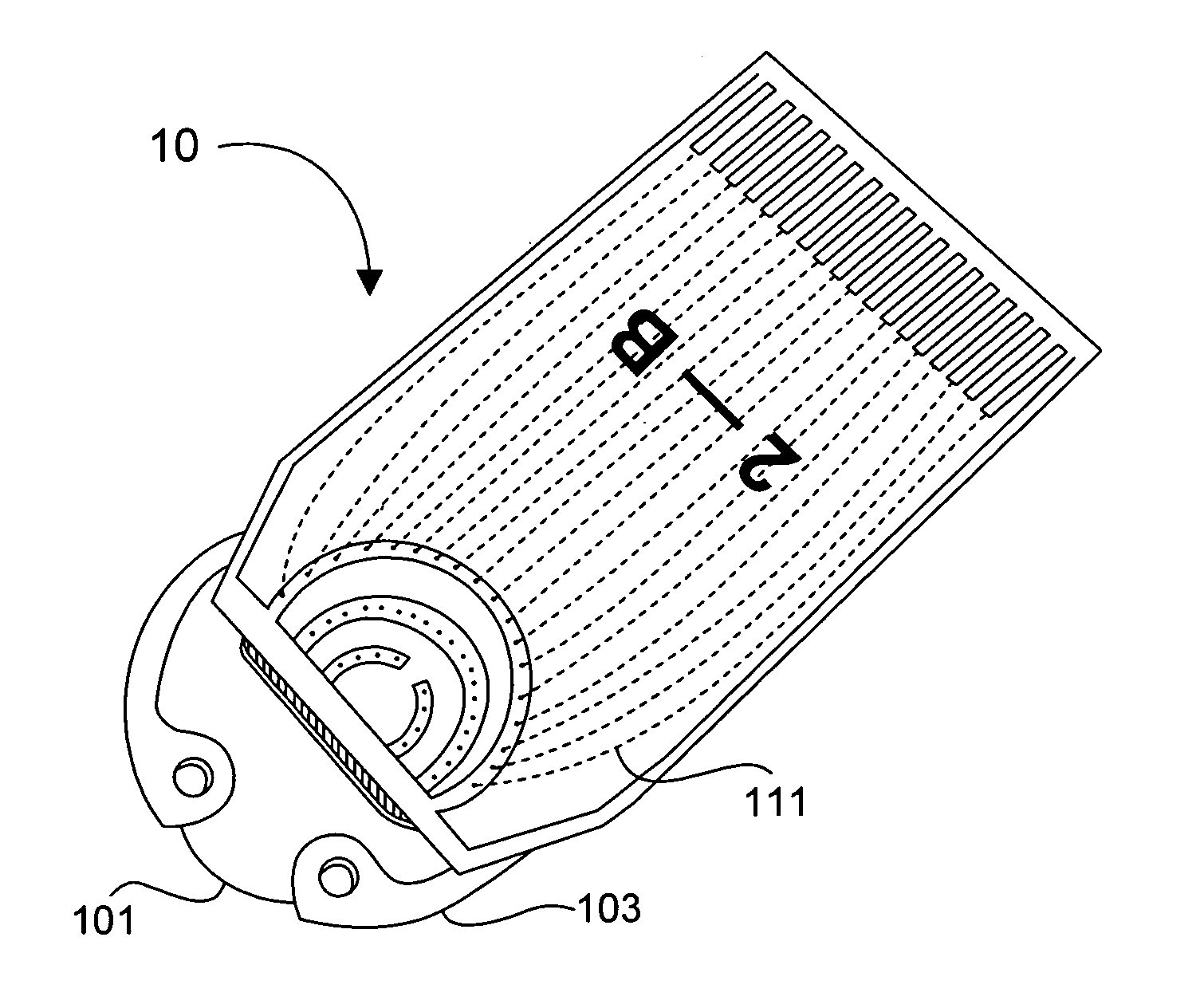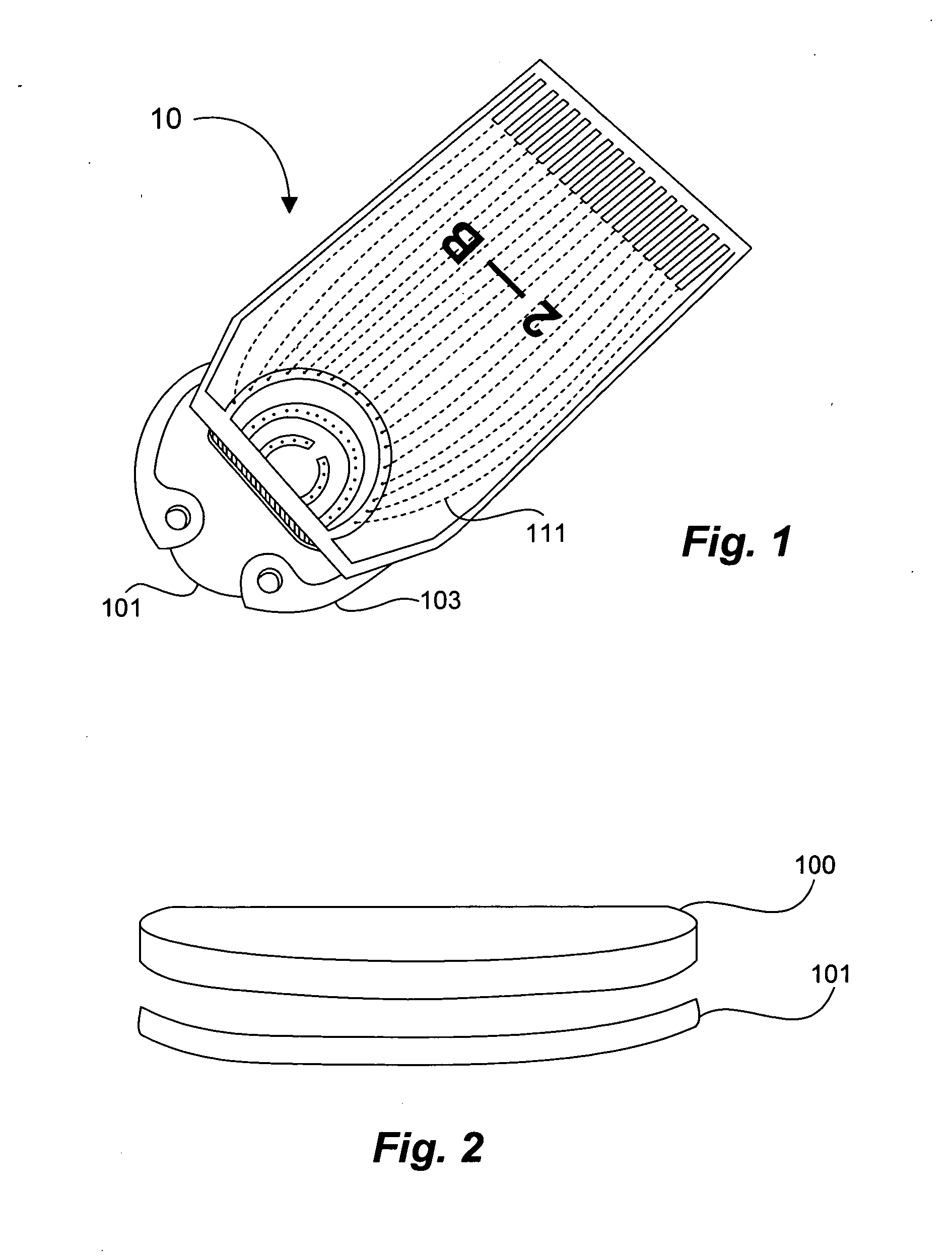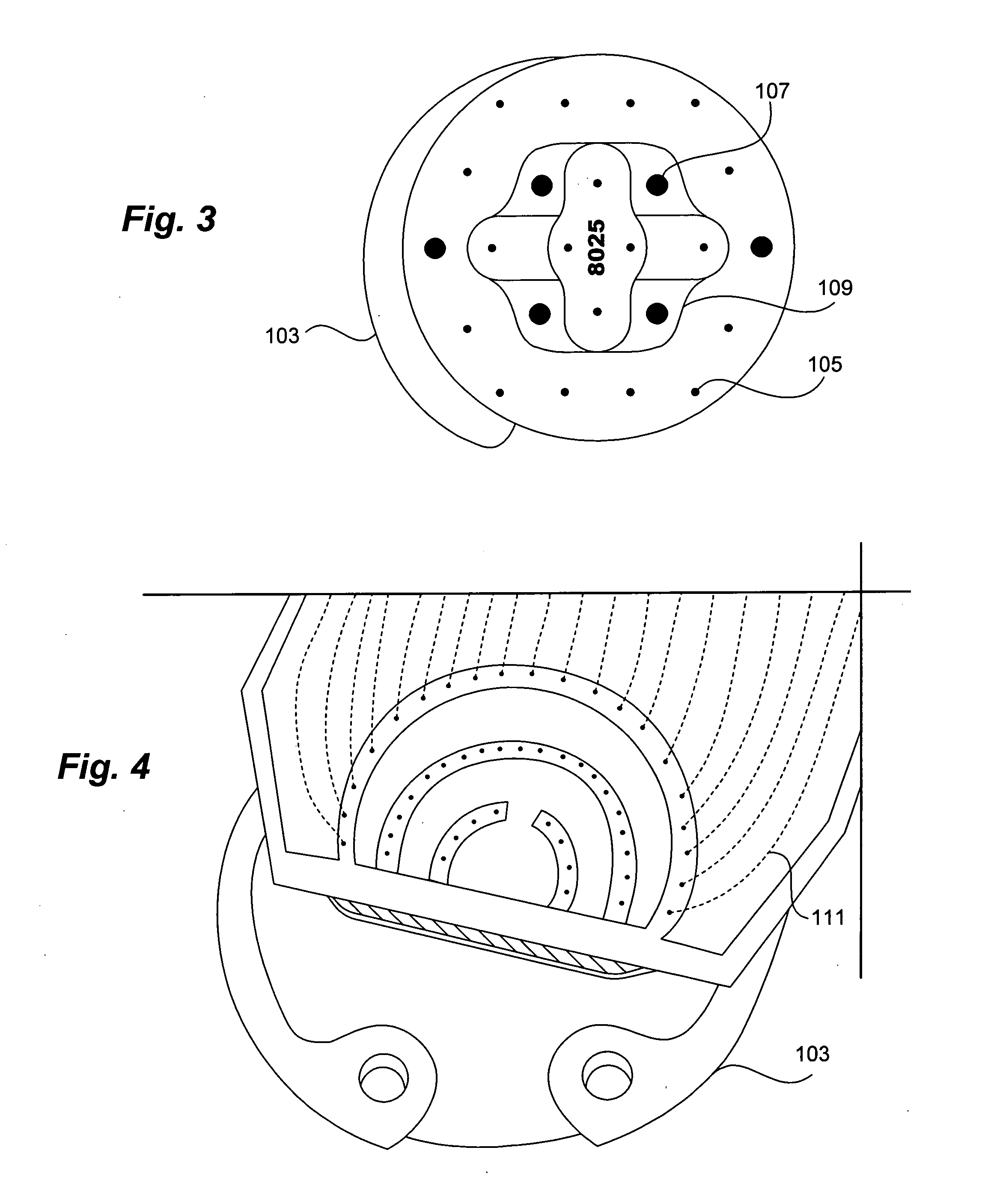Tissue implantable sensors for measurement of blood solutes
a technology of blood solutes and implantable sensors, which is applied in the field of tissue implantable sensors for blood solute measurement, can solve the problems of impaired blood glucose regulation, near inability to sufficiently frequent sampling, and obstruct warning strategies that rely on, so as to improve the results of estimation, the effect of easing the effects of intrinsic detector drift and failur
- Summary
- Abstract
- Description
- Claims
- Application Information
AI Technical Summary
Benefits of technology
Problems solved by technology
Method used
Image
Examples
example 1
Method for Fabricating a Tissue Implantable Glucose Sensor
1) Using standard thick-film techniques, create conductive vias through an implant-grade alumina disc. 2) Print and fire an electrode array of high-purity platinum onto the disc, aligning the electrodes with their respective conductive vias. These electrodes will become the working, reference and counter electrodes of the detectors. 3) Print and fire insulating dielectric layers, as necessary. 4) Electrochemically apply Ag / AgCl to the reference electrodes. 5) Using wirebonding, or other conventional circuit fabrication techniques, provide connections from the electrodes of the detector array to conventional potentiostat circuitry. 6) Affix a multilayer glucose oxidase-impregnated membrane to the face of the disc. The outer layer of this membrane is silicone rubber; the glucose oxidase is impregnated in a fashion that supplies oxygen in relative excess to the glucose oxidase (see, for example, co-pending and commonly ow...
example 2
Improvement in Stability of Glucose Measurements Using the Sensor of the Invention
FIG. 5 depicts data typical of current readings obtainable in vitro from a dual-detector sensor, consisting of a glucose-sensitive detector and an oxygen-sensitive detector.
A sensor constructed as described in Example 1 was implanted in a live, healthy hamster. In particular, two titanium plates, each of which includes a small “window,” are placed so as to support a thin layer of retractor muscle beneath excised subcutaneous tissue on the animal's back. A cover glass was placed in the window over one side of the exposed skin, and the sensor device was fixed onto the opposite side. Catheters were placed in the carotid artery and jugular vein for sampling and fluid delivery. The resulting structure is a layer of tissue 100 μm thick by 12 mm in diameter, having intact microvasculature.
To provide stimulus to the glucose detector, a bolus of 60 μl / minute of 50 gm % glucose was introduced into the cathe...
example 3
Application of Signal Processing Algorithms
In the following figures, the time course of measurements taken is indicated along the horizontal axis of each graph. Either the measured current or detected analyte concentration is indicated along the vertical axis of each graph, as shown.
FIG. 11 shows unprocessed primary and secondary detector signals from a glucose sensor that uses oxygen detectors and the glucose oxidase-catalyzed depletion of oxygen to measure glucose, the sensor being made according to the invention. The perturbation at about 12:25 in each of the primary detector signals is approximately simultaneous with the others, but not simultaneous with the secondary detector signals. Thus, the primary detectors appear to be responding approximately in synchrony with each other.
FIG. 12 shows an enlarged view of the secondary detector signals during a time period where a perturbation has been detected in the signals of both the primary and secondary detectors due to a change...
PUM
 Login to View More
Login to View More Abstract
Description
Claims
Application Information
 Login to View More
Login to View More - R&D
- Intellectual Property
- Life Sciences
- Materials
- Tech Scout
- Unparalleled Data Quality
- Higher Quality Content
- 60% Fewer Hallucinations
Browse by: Latest US Patents, China's latest patents, Technical Efficacy Thesaurus, Application Domain, Technology Topic, Popular Technical Reports.
© 2025 PatSnap. All rights reserved.Legal|Privacy policy|Modern Slavery Act Transparency Statement|Sitemap|About US| Contact US: help@patsnap.com



